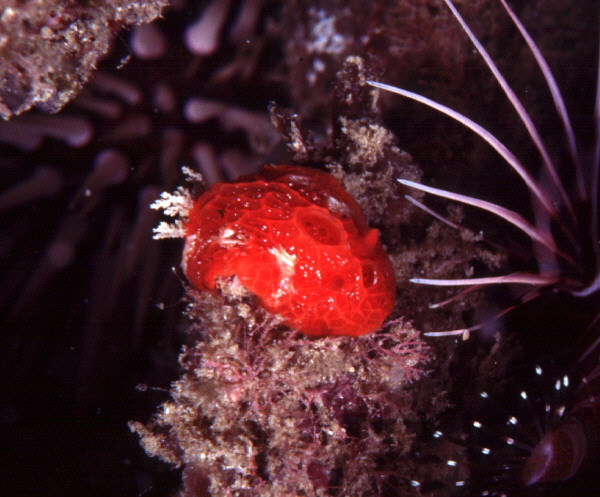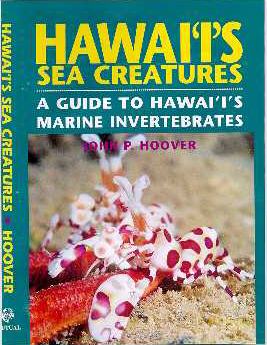 |
Aldisa pikokai
Aldisa pikokai Bertsch & Johnson, 1982
Family Aldisidae
This tiny orange-red nudibranch resembles a small encrusting sponge, the three pits on its back mimicking excurrent pores. The gills are white. Active only at night, it remains hidden under stones or in crevices during the day, most often between 6 and 30 ft. and sometimes as deep as 80 ft.
The species name comes from two Hawaiian words: piko
("navel") and kai ("sea"). The three pits reminded the zoologists who
described this animal of pits pounded into pahoehoe lava in ancient
times, into which children's umbilical cords were deposited. A rare
and much larger nudibranch of the genus Sclerodoris closely resembles
this species but has only one pit. A small orange-red lamellariid with
a smooth rather than pitted surface also resembles it. To about 1/2 in.
Known only from the Hawaiian Islands.
Photo: Makua, O`ahu. 20 ft.
Photos and Text courtesy of John Hoover

Hawaii's Fishes, a Guide for Snorkelers, Divers and Aquarists Mutual Publishing, 1993 Hawaii's Underwater Paradise, Mutual Publishing, 1997 Hawaii's Sea Creatures, a guide to Hawaii's Marine Invertebrates. Mutual Publishing, 1999. John's books are available through Sea Challengers !
Send John E-Mail at hoover@hml.org |
